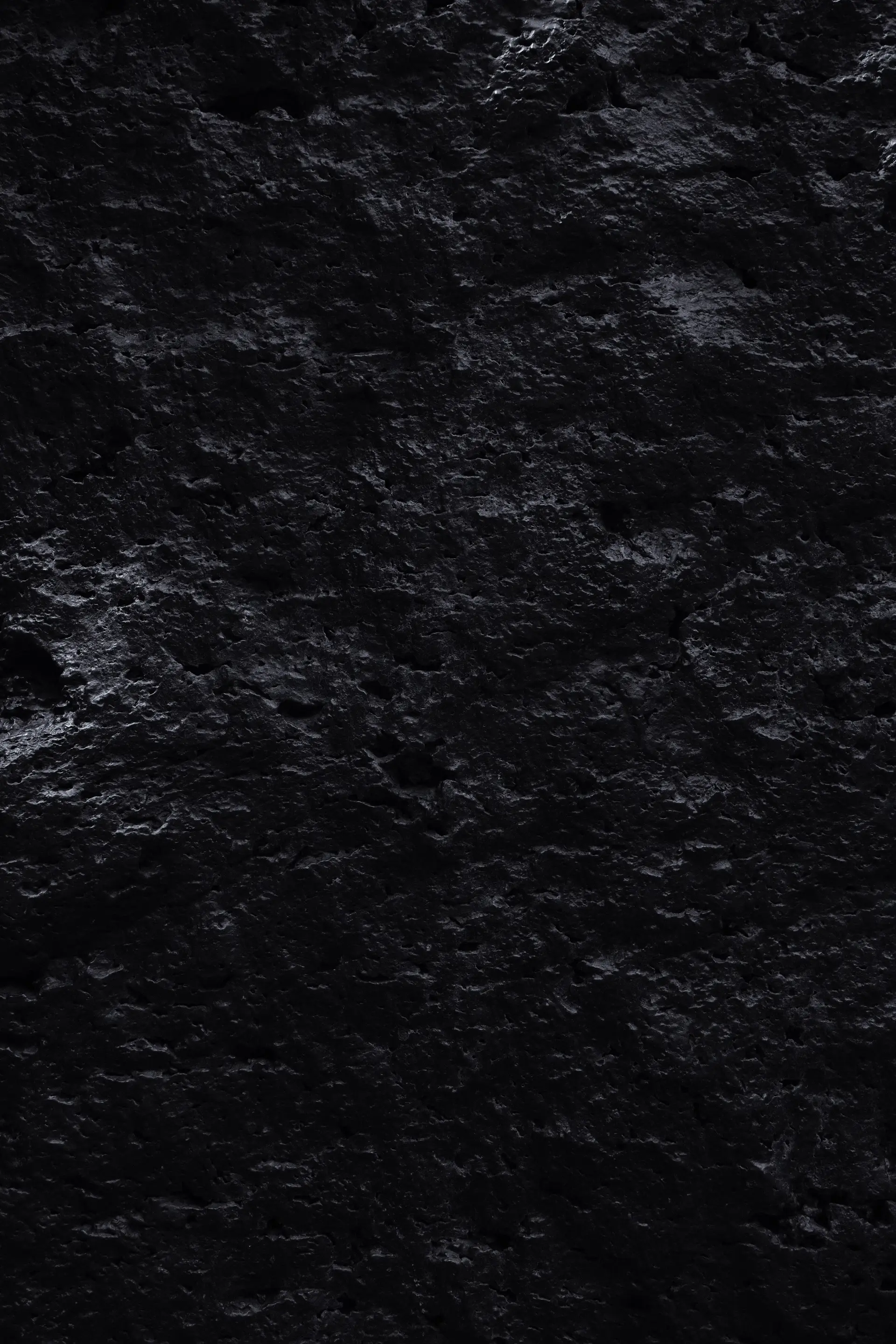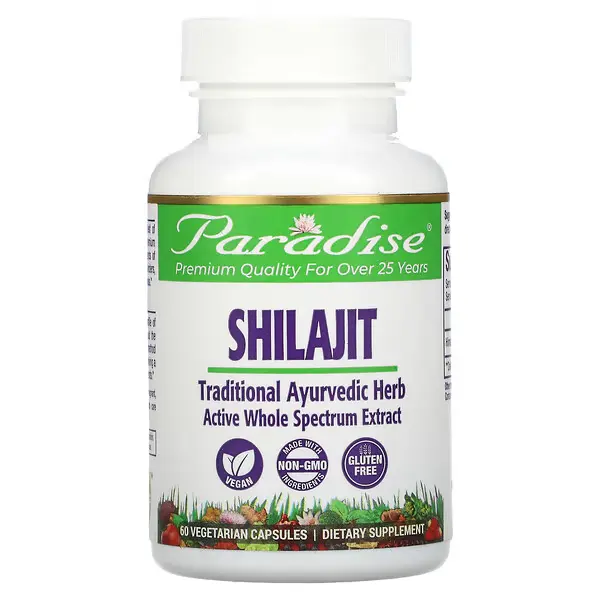Shilajit
What is shilajit?
Shilajit, sometimes also referred to as mumijo in the Himalayas, rasayana in Ayurveda, or momia in Saudi Arabia, is known as a darkly colored substance with a tar like appearance. It is, however, found in varying consistencies and in different colors.[1] It is found in shapeless pieces with sometimes smooth and sometimes porous surfaces. Supposedly it has a slight balsamic smell.[4] It is soluble in water, alcohol and acetone and can be used to brew a tea of sorts. It consists of a wide variety of compounds found commonly in the top layer of soil including humic- and fulvic acids. It has been used for thousands of years in traditional medicine. Especially in the asian continent. Due to its varying origins even two pieces of shilajit from the same mountain can display different properties and mineral contents.[5]
Where does shilajit come from?
Shilajit is a naturally occurring compound found in mountain ranges across the globe, ranging from the Himalayas to the Andes. Found in so many different places it is not unexpected to be found in different variations with vastly different mineral compositions. It is not exactly clear how it is created. Some think it is created by the decomposition of plant material over a period of centuries, others due to the influence of nearby growing moss species in combination with sunlight.[3] It is typically found between altitudes of 1000 and 5000 meters on cave walls, in or attached to rocks.[2]
What are the effects of shilajit?
Shilajit can consist of such a wide variety of different substances that any of the supposed benefits can come from the breadth of micronutrients. These include steroids, alkaloids, amino acids, organic acids, resins, essential oils and different vitamins. The different names traditional medicine uses for shilajit can convey its uses and characteristic features. Mumijo is Greek for saving body. Shilajit means destroyer of weakness in Sanskrit. The term rasayana means rejuvenator. These terms do not convey any specific benefits but indicate more of a general health benefit. The literature of traditional medicine states that shilajit can be used as a laxative, diuretic, analgesic, antiseptic, probiotic, germicide and relaxant amongst many others. Varying studies report antioxidant properties[8] and increased immune system responses.[7]
Cognitive
- Reduced cognitive decline[6]
- Increased memory
Physical
- Reduced cholesterol
- Reduced inflammation
- Increased testosterone
- Increased sperm quality
- Increased hair growth
How to use shilajit?
Shilajit can be consumed like a food. People living in mountain ranges report including it in their regular diet. For the regular consumer however, regular dietary supplements come in powders, pills and liquids. As is the case with real shilajit, all of these three supplements may contain differing compounds.
How much shilajit to use?
When trying out new supplements it is wise to start with a lower dose and–depending on the experienced effects–increase or decrease the dosage accordingly
Conducted studies have not exceeded 2000 mg per day. Various other sources suggest taking anywhere between 100 and 500 mg a day. For the purpose of improving cholesterol levels the study used 2 grams per day for 45 days. If trying out shilajit as a daily supplement, a lower dose of 150-300 mg a day would be suggested.
What are the side effects of shilajit?
Possible side effects might include increased levels of metals in the body, altered hormone levels and increased uric acid production.
Interactions of shilajit
Most nootropics are relatively safe to use on their own. Combining them with other substances may cause them to suddenly become dangerous or life-threatening.
There are no known interactions of shilajit.
References
- [1] Wilson, E., Rajamanickam, G. V., Dubey, G. P., Klose, P., Musial, F., Saha, F. J., Rampp, T., Michalsen, A., & Dobos, G. J. (2011). Review on shilajit used in traditional Indian medicine. Journal of Ethnopharmacology, 136(1), 1–9. https://doi.org/10.1016/j.jep.2011.04.033
- [2] Garedew, A., Feist, M., Schmolz, E., & Lamprecht, I. (2004). Thermal analysis of mumiyo, the legendary folk remedy from the Himalaya region. Thermochimica Acta, 417(2), 301–309. https://doi.org/10.1016/j.tca.2003.09.034
- [3] Agarwal, S. P., Khanna, R., Karmarkar, R., Anwer, M. K., & Khar, R. K. (2007). Shilajit: a review. Phytotherapy Research, 21(5), 401–405. https://doi.org/10.1002/ptr.2100
- [4] Frolova, L. N., & Kiseleva, T. L. (1996). Chemical composition of mumijo and methods for determining its authenticity and quality (a review). Pharmaceutical Chemistry Journal, 30(8), 543–547. https://doi.org/10.1007/bf02334644
- [5] Ghosal, S., Lal, J., & Singh, S. K. (1991). The core structure of shilajit humus. Soil Biology and Biochemistry, 23(7), 673–680. https://doi.org/10.1016/0038-0717(91)90082-u
- [6] Cornejo, A., Jiménez, J. M., Caballero, L., Melo, F., & Maccioni, R. B. (2011). Fulvic Acid Inhibits Aggregation and Promotes Disassembly of Tau Fibrils Associated with Alzheimer’s Disease. Journal of Alzheimer’s Disease, 27(1), 143–153. https://doi.org/10.3233/jad-2011-110623
- [7] Ghosal, S. (1990). Chemistry of shilajit, an immunomodulatory Ayurvedic rasayan. Pure and Applied Chemistry, 62(7), 1285–1288. https://doi.org/10.1351/pac199062071285
- [8] Bhattacharya, S. K., Sen, A. P., & Ghosal, S. (1995). Effects of shilajit on biogenic free radicals. Phytotherapy Research, 9(1), 56–59. https://doi.org/10.1002/ptr.2650090113
| Name | Shilajit |
| Other names | Mumijo |
| Effects | Memory, Anxiety Reducing, Sleep |
| Dosage | 250 ~ 800 mg Low to medium dosage 250 800 1400 |

